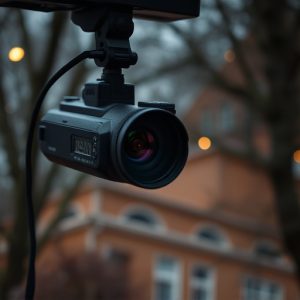Disguised Recording: Strategize, Protect Kids, Navigate Ethics Responsibly
Micro cameras emerge as vital tools for Child Protection in today's digital age, offering discr…….
Micro cameras emerge as vital tools for Child Protection in today's digital age, offering discreet recording solutions in schools, daycare centers, and homes. Strategically placed, these tiny devices monitor environments, deter potential harm, and gather evidence of abuse or neglect while preserving privacy. Wireless models with motion sensors provide continuous surveillance, optimizing battery life. However, their use raises ethical and legal considerations, necessitating understanding of local laws, responsible implementation, and adherence to privacy rights. When implemented thoughtfully, micro cameras can create safer environments for children by capturing crucial data through natural cover placement and responsible footage management.
In the pursuit of safeguarding our children, hidden surveillance through disguised recording equipment emerges as a powerful tool. This comprehensive guide delves into the strategic deployment of micro cameras for child protection, addressing ethical considerations and legal frameworks. We explore effective placement techniques to capture potential risks discreetly while ensuring responsible handling and review of footage. From understanding the compelling need for such technology to selecting appropriate micro cameras, this article equips parents and caregivers with essential knowledge for enhancing safety measures.
- Understanding the Need for Disguised Recording Equipment
- Types of Micro Cameras for Child Protection
- Ethical Considerations and Legal Frameworks
- Effective Placement Strategies for Discreet Surveillance
- Maintaining and Reviewing Footage Responsibly
Understanding the Need for Disguised Recording Equipment
In today’s digital age, the need for discreet and hidden recording solutions has become increasingly vital, especially in scenarios related to child protection. Micro cameras, often referred to as hidden or disguised recording equipment, play a crucial role in ensuring safety and security for our younger generation. These tiny yet powerful devices offer a discrete way to monitor and gather evidence without raising suspicion. Whether it’s in schools, daycare centers, or even at home, the strategic placement of micro cameras can deter potential harm and provide invaluable footage for investigative purposes.
The primary advantage lies in their ability to capture authentic and unaltered events, making them indispensable tools for authorities and caregivers. By integrating these recording devices into various environments, individuals responsible for child welfare can create a safer space while maintaining privacy. This strategy is particularly effective in identifying and preventing instances of abuse, neglect, or any illegal activities that may go unnoticed by the naked eye.
Types of Micro Cameras for Child Protection
Micro cameras, also known as hidden or spy cameras, are a powerful tool in ensuring child protection. These compact and discreet devices come in various types tailored for different needs. For instance, small camera modules designed to fit inside toys or clothing offer an innovative approach to monitoring children’s safety. They can capture video and still images, allowing parents or caregivers to remotely keep an eye on kids’ activities.
Wireless micro cameras with real-time streaming capabilities further enhance child protection. These devices can be easily hidden in common areas like playrooms or bedrooms, providing continuous surveillance. Additionally, some models feature motion sensors, ensuring that recordings only begin when activity is detected, conserving battery life and storage space. This strategic use of technology empowers parents to create a safer environment for their children while fostering trust and open communication.
Ethical Considerations and Legal Frameworks
When considering the placement of recording equipment, especially micro cameras for child protection, it’s paramount to navigate a complex web of ethical considerations and legal frameworks. The use of surveillance technology raises significant privacy concerns, particularly when targeting vulnerable populations like children. It’s crucial to balance the need for safety and security with the right to privacy and freedom from unwarranted surveillance.
Different jurisdictions have distinct laws governing hidden or disguised recording devices. Some countries permit such equipment for specific purposes, such as law enforcement or parental control, while others strictly regulate or outright ban their use. Parents considering micro cameras for child protection must understand and comply with local laws to avoid legal repercussions. Additionally, ethical guidelines should guide the implementation of these technologies, ensuring they are used responsibly, transparently, and only when absolutely necessary.
Effective Placement Strategies for Discreet Surveillance
Discreet surveillance, when done right, can be a powerful tool for micro cameras for child protection. The key to success lies in strategic equipment placement. Cameras should be positioned out of direct sight yet capable of capturing clear footage. For instance, placing them inside common household items like books, clocks, or even fake rock cameras offers natural cover.
Consider the behavior patterns and routines of the individuals being monitored. Strategic placement near entryways, windows, or common areas can provide valuable insights without raising suspicion. Additionally, using motion-activated cameras ensures that recordings only occur when there’s activity, enhancing privacy and battery life.
Maintaining and Reviewing Footage Responsibly
Maintaining and reviewing footage responsibly is a critical aspect of using micro cameras for child protection. These tiny yet powerful tools capture valuable data that can significantly contribute to ensuring the safety and well-being of children in various settings, from schools to daycares. However, it’s essential to approach this process with sensitivity and care. Regularly reviewing the footage allows caregivers, educators, and authorities to identify potential issues or suspicious behavior discreetly observed through micro cameras.
Proper maintenance involves secure storage of the devices, protecting them from unauthorized access, and ensuring that only authorized personnel have the keys to view the recorded content. It’s equally important to establish clear protocols for keeping detailed records of when and where each micro camera is placed, as well as who has access to its footage. This helps maintain transparency, respects privacy, and upholds legal standards in child protection practices.
Disguised recording equipment plays a vital role in ensuring Micro Cameras for Child Protection, especially in today’s digital era. By understanding the ethical and legal frameworks surrounding this technology, we can implement effective placement strategies to create safer environments for children while respecting privacy. Responsible maintenance and review of recorded footage are key to making informed decisions and upholding the highest standards of integrity.


